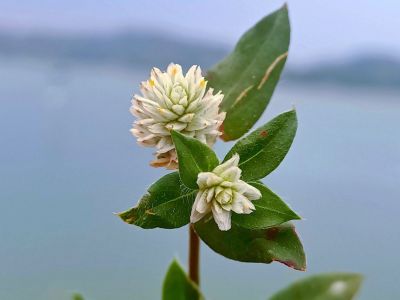Alligatorweed Identification
Alligatorweed displaces native vegetation and makes fishing difficult. It also clogs waterways and drainage systems. In irrigation situations, it reduces uptake and flow of water. Alligatorweed also provides a breeding ground for mosquitoes. For all these reasons and more, alligatorweed removal is an important conservation effort. Alligatorweed can form dense mats. The leaves may vary in shape but are generally 3 to 5 inches (8-13 cm.) long and pointed. Foliage is opposite, simple and smooth. Stems are green, pink, or red, herbaceous, erect to trailing, and hollow. A small white flower is produced on a spike and resembles clover blooms with a papery appearance. An important tidbit of alligatorweed facts regards its ability to establish from broken bits of stem. Any part which touches ground will root. Even a single piece of stem that was split away upstream can root much later downstream. The plant is very invasive in this way.
Non-toxic Alligatorweed Removal
There are a few biological controls that seem to have some effectiveness in controlling the weed.
The alligatorweed beetle is native to South America and imported to the United States in the 1960’s as a control agent. The beetles did not establish successfully because they were too sensitive to the cold. The beetle had the greatest effect in diminishing the weed population. A thrip and a stem borer were also imported and aided in the successful control campaign. The thrips and stem borer did manage to persist and establish populations which still exist today. Mechanical control of alligatorweed is not useful. This is due to its ability to re-establish with just a tiny stem or root fragment. Hand or mechanical pulling can physically clear an area, but the weed will regrow in just a few months from bits of it left behind in the effort to eradicate the weed.
How to Kill Alligatorweed
The best time to treat for alligatorweed is when water temperatures are 60 degrees F. (15 C.). The two most common herbicides listed for control of the weeds are aquatic glyphosate and 2, 4-D. These require a surfactant to help in adherence. The average mixture is 1 gallon to every 50 gallons of water. This produces browning and signs of decay in ten days. The best results come from treating the weed in the early stages of growth. Older, thicker mats will require treatment at least twice in the year. Once the plant is dead, it is safe to pull it or just leave it to compost into the area. Getting rid of alligatorweed may require several attempts, but this national weed poses threats to native flora and fauna and a challenge to boaters, swimmers, and farmers. Note: Chemical control should only be used as a last resort, as organic approaches are safer and much more environmentally friendly.
